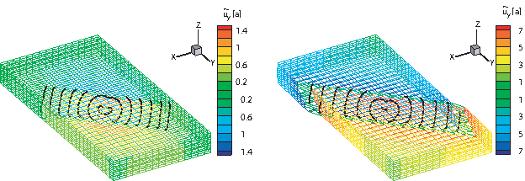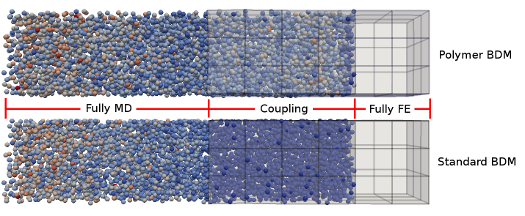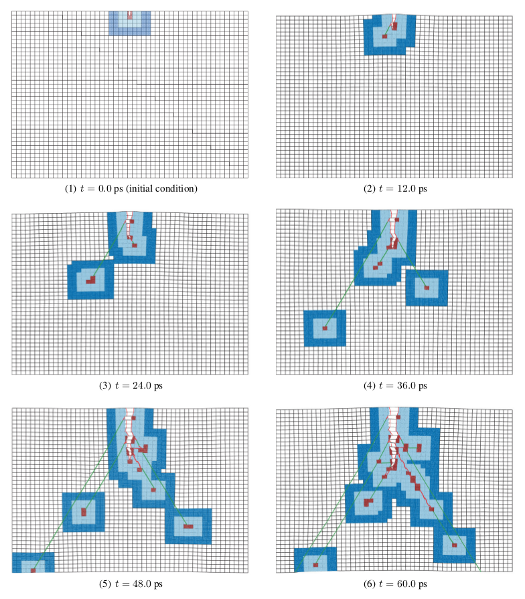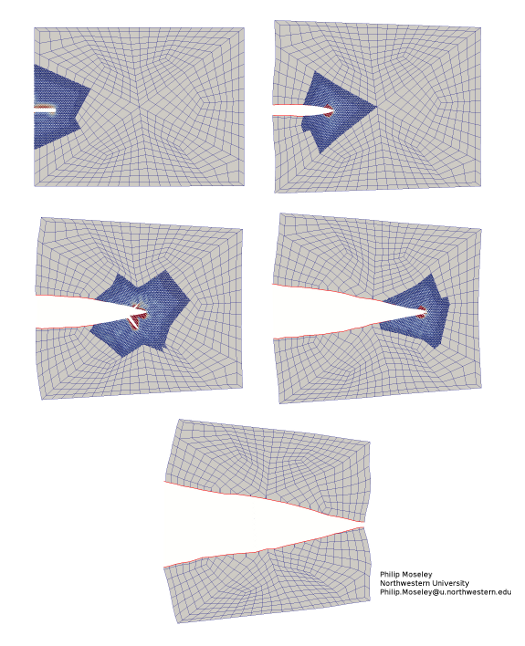Current Research
Surface and Interface Effects on Core-Shell Nanodiamond Geometries
Core-shell nanodiamonds have interesting chemical properties at the outer surfaces, which are strongly influenced by the surface effects and the internal stresses caused by the interface. I am working to model these effects using continuum-scale techniques in the commercial code Abaqus.

An example core-shell nanodiamond geometry.
Coupled Atomistic/Discrete-Dislocations in 3D
New research goal, working to extend the CADD method to support passing dislocations in 3D.

Superposition concepts in 2-dimensional CADD.

Discrete-dislocation displacements in 3-dimensions.
Coarse-Grained Modeling of Polyurea Composites for Shock Wave Dissipation
Multiscale coupling is a challenge with polymer chains, since they do not have a crystal structure. We are working to develop new, flexible methods for coupling these chains to continuum without damping out the natural movements and vibrations of the chains.
Adaptive Atomistic-to-Continuum Coupling
An adaptive atomistic-to-continuum method is developed for modeling the propagation of material defects. This method extends the Bridging Domain Method (BDM) to allow the atomic domain to dynamically conform to the evolving defect regions during a simulation, without introducing spurious oscillations and without requiring mesh refinement. The atomic domain expands as defects approach the BDM coupling domain by fine-graining nearby finite elements into equivalent atomistic subdomains. Additional algorithms coarse-grain portions of the atomic domain to the continuum scale, reducing the degrees of freedom, when the atomic displacements in a subdomain can be approximated by FEM or XFEM elements to within a certain homogeneity tolerance. The XFEM approximations are created by fitting the broken inter-atomic bonds of fractured surfaces and dislocation slip planes. Since atomic degrees of freedom are maintained only where needed for each timestep, the solution retains the advantages of multiscale modeling, with a reduced computational cost compared to other multiscale methods.
Below is an example of the adaptation algorithms on an irregular hex mesh (click for full size). The XFEM surfaces are shown as red lines, and the atoms are colored by variation in displacement from the continuum approximation. There is also an older animation of the adaptation procedure (3.7 mb).


